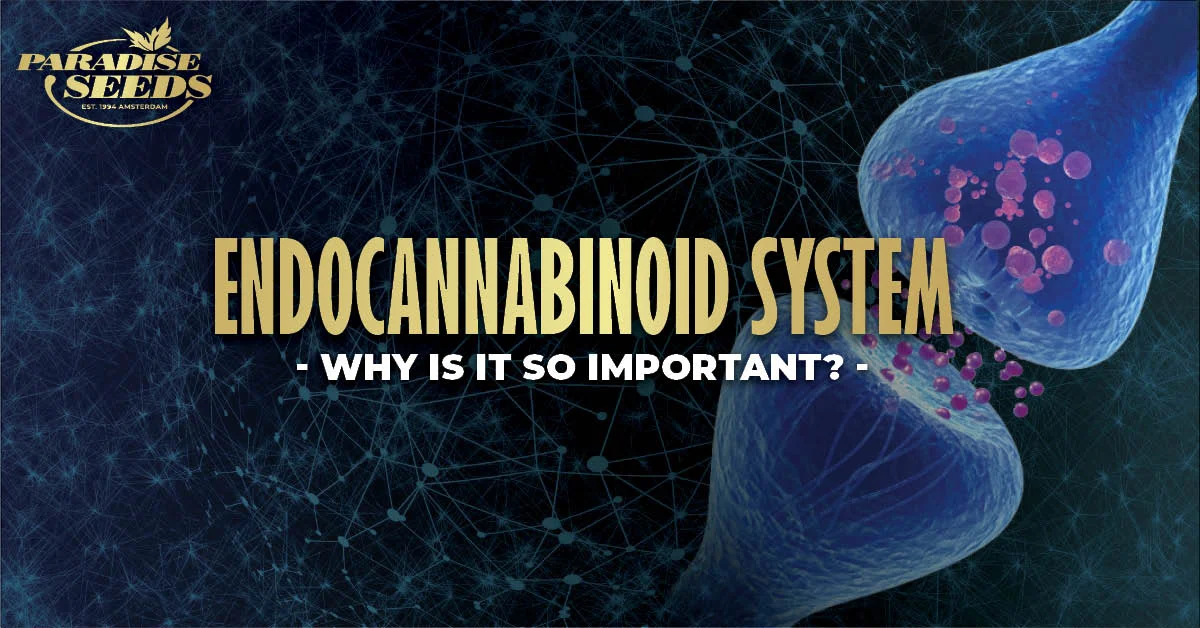In the 1990s scientists gained a new insight which challenged traditional perspectives about the cannabis plant prompting new research and a quest for further understanding of its potential medical qualities. This article looks at why the endocannabinoid system is important for the function of our bodies and maps out the history of its discovery.
Before taking a look at how the endocannabinoid system was discovered, let’s take a look at what it actually is. While many people – especially in the cannabis community – are aware of the endocannabinoid system (which is also commonly referred to as ECS), coming up with a simple explanation for what it is and what it does can be challenging. This is partly because science is still trying to find the answers and research is ongoing.
There are many scientific articles that go into great depth about the endocannabinoid system, dealing with topics such as physiology and pharmacology, so this article aims to explain the ECS in simple terms. Bear in mind that this is still a huge area of scientific research with many unanswered questions about the endocannabinoid system.
What is the endocannabinoid system? A simple explanation
The reason why so many questions remain unanswered is because of the complexity of the endocannabinoid system. The ECS, which has been identified in the bodies of all mammals, is a sophisticated network of:
Endocannabinoids. These molecules, which are produced by the human body, are similar to cannabis cannabinoids, produced by the plant. Their function is to maintain balance in the body and they are generated as and when the body needs them.
Receptors. Divided between CB1 receptors (found predominantly in the central nervous system) and CB2 receptors (found predominantly in the peripheral nervous system), the endocannabinoid molecules will dock with these to do their work. When you have back pain, for example, endocannabinods bind to CB1 receptors in order to produce your body’s own response to the pain and do what it can to relieve the symptoms.
Enzymes. Once the endocannabinoids have done their job, enzymes will intervene to break them down effectively ending their contract – ‘your task is done, we don’t need you anymore!’
What does the endocannabinoid system do?
To make a basic analogy, if you think of the body like computer hardware (ie the functioning machine), then the ECS would be the system software which allows it to perform its functions effectively. In the case of the human body, the endocannabinoid system was discovered to regulate many of the daily processes which affect how effectively it operates. Early research identified that the ECS governs functions such as our moods, appetites, sleep patterns and memory function as well as reproduction.
If the computer is operating as it should, all of its processes run smoothly. However as anyone who has had a computer issue can identify with, if there is a problem with one or more of the operating processes then the machine stops running effectively. Instead of calling the repair shop or turning to Youtube, the mammalian body calls in the endocannabinids to try and straighten the problem out.
How was the endocannabinoid system discovered?
The road to how the endocannabinoid system was discovered began with a couple of significant markers. Cannabis compounds were first isolated in the 1940s (CBD), but their significance wasn’t truly noted until the publication of “Isolation, structure and partial synthesis of an active constituent of hashish” in the Journal of the American Chemical Society authored by Prof Raphael Mechoulam and Dr Yechiel Gaoni in 1964. Their work at the Hebrew University of Jerusalem first identified the structure of THC. A
The potential of the endocannabinoid system was discovered by accident through research that ironically began with US government funding to identify the detrimental effects of cannabis. Building on the 1988 work of the St. Louis team, which identified the receptor sites that responded to cannabis compounds, a team from the USA’s National Institute of Mental Health mapped and cloned the DNA sequence encoding a cannabinoid receptor found in the brain. It was hailed by the NewScientist as ‘the switch that turns the brain onto cannabis’.
Endocannabinoid research took a further leap in 1992 when a team from Jerusalem’s Hebrew University led by Dr Lumir Hanus and Dr William Devane discovered the endocannabinoid element of the ECS. This discovery formed the foundations for research which established the concept of a system, termed the endocannabinoid system, that was responsible for regulating numerous functions of the body.
How was the endocannabinoid system discovered to interact with cannabis?
The link between cannabis and the ECS was first made in the 1988 by a scientific team at the St. Louis University School of Medicine, who became aware of receptor sites in the brains of mammals which responded to cannabis compounds. Subsequent research has discovered that the compounds of the cannabis plant have the same ability to bind to receptors in mammalian bodies as internal endocannabinoids.
Therefore THC binds to both CB1 and CB2 receptors, prompting the ECS to respond – producing a range of responses from euphoria, to pain relief to anxiety. The fact that some people can smoke weed and be fine and other people can have negative effects from consuming THC suggests that the response could be linked to the person’s unique ECS setup.
By contrast, research has identified that CBD doesn’t bind to the CB1 and CB2 receptors. The research hasn’t determined exactly why yet, with theories suggesting that it may stop ECS enzymes from breaking down so efficiently (so they hang around for longer ie bringing longer term pain relief) or even suggesting that they are binding somewhere else.
Do you have to use cannabis to have an endocannabinoid system?
The answer is no! because of the similarity in name, there is sometimes confusion about the relevance of the endocannabinoid system for non-cannabis users, but it is there in everyone.
The essential building blocks mentioned in this article established the basis for further exploration of the ECS and how cannabis and its compounds, such as the cannabinoids THC and CBD, interact with it. The research continues and with it hopes that, by unlocking the secrets of the complex network of endocannabinoids, receptors and enzymes, in the future cannabis can play a key role in the production of medicines targeted at areas of the body regulated by the ECS.


